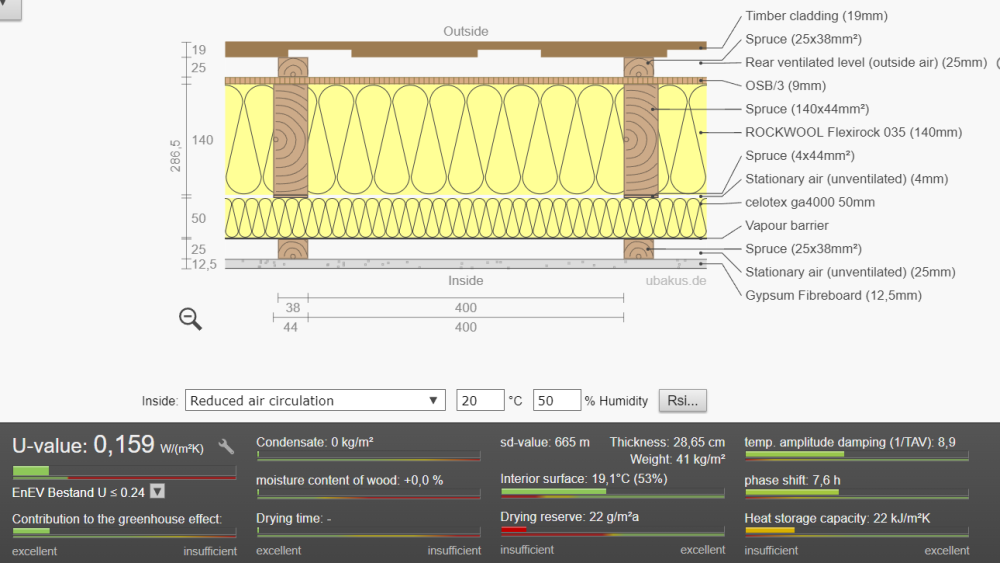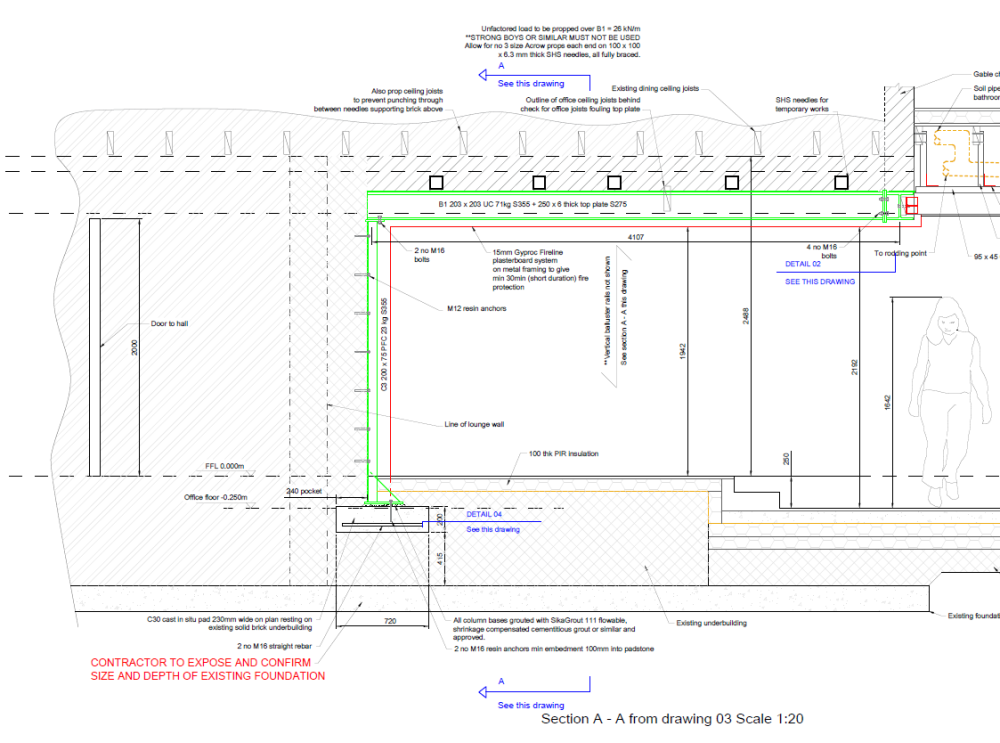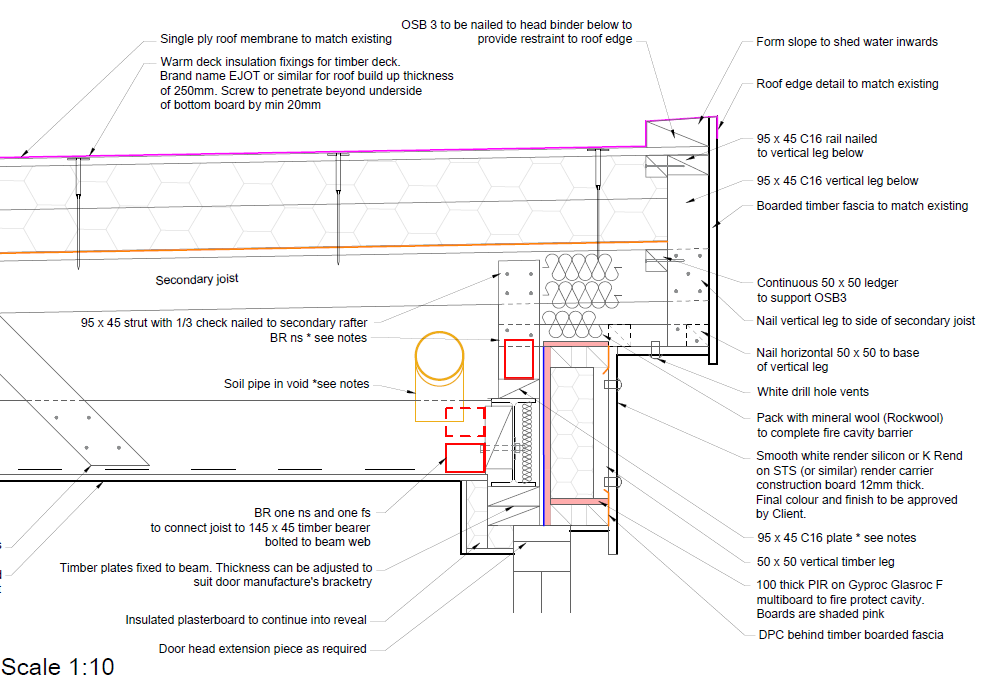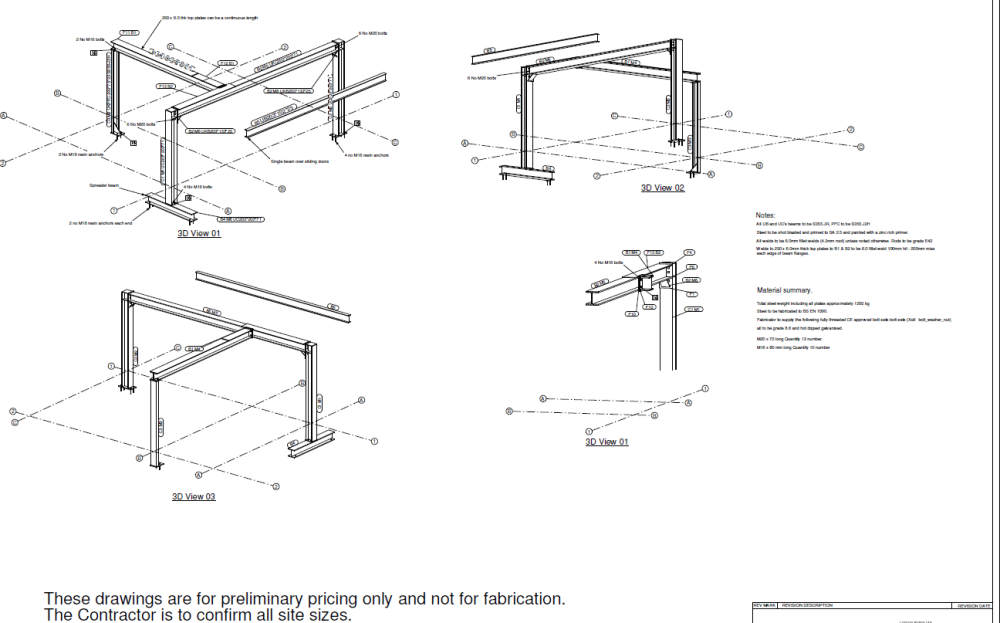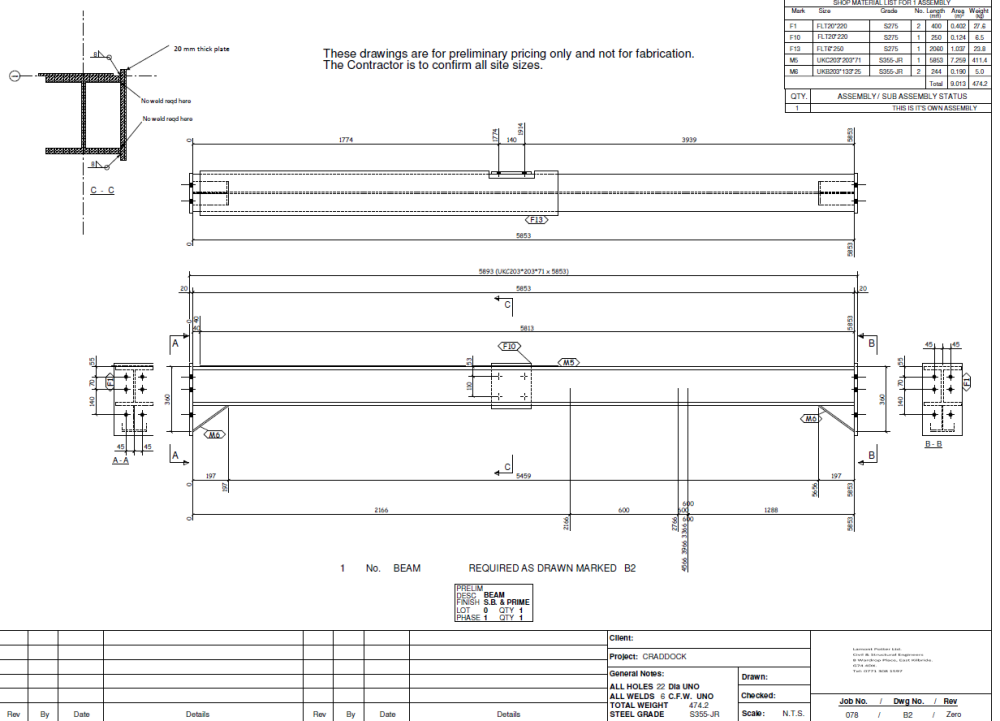Leaderboard
Popular Content
Showing content with the highest reputation on 04/12/24 in all areas
-
@minty Sorry I think I(we) might have git a bit bogged down here in an effort to assist. Shortest answer I have to solve your problem. 1. Stop any water leaks from outside or inside. ( Roofs, windows, doors, pipes, shower trays, washing machines etc etc) 2. Replace the bathroom fan with this. You can DIY it or pay an electrician. 3. Make the house hotter by leaving the rads on. 4. Give it time.2 points
-
Yes - this is what we are doing for a stone barn conversion too. The reason we chose it was similar to your thoughts in that with every quote there were so many caveats and exclusions due to the age and complexity of the project. It doesn't stop you worrying about how you are going to afford it but it does give you a high degree of transparency. For the conversion of an old barn, no matter how detailed and careful you are in estimating or how brilliant a group of engineers and architects are in creating the original tender document, on my current experience there is absolutely no way that any estimate could capture the variables that we are seeing in this build. For example we surveyed the roof and timbers and estimated that 30% might need replacing - In reality the roof timbers were in far worse shape than the original survey suggested and we had to replace and repair a huge amount more than was planned. All in all, the roof finally came in at 125% of the highest estimate range (including the 25% contingency we used) which whilst not great, at least this was not 'an extra cost' over and above the tender quotes that we would have had and we did have some choice in the way things were done. I don't for a minute think that the cost+ is a perfect model, particularly as the contractor is not incentivised to find the cheapest materials so I do tend to get involved with larger purchases. As i see it, I am employing the contractor to build a property not manage my expenditure, and I do get a little concerned that the model relies on the accurate reporting of the teams time on site. We live in a cottage on site so we are able to be involved in making any and all key decisions and this also plays to what works for us. I would rather be over-asked than under-asked and with the cost+ everything is double checked1 point
-
Is anyone else watching these? I've gone back to the beginning and watching from the start. But whenever Gearoge goes back to see the finished building, the furnishings and accessories look more like a magazine shoot than the builders home! Do they just get interior designers to fill it for the tv before the actual builders/renovators fill it with their own stuff? I do love what they are all doing and its great to see the old buildings come to life again and have a new purpose.1 point
-
Back in 2008 We did the plastering and rendering on a local site of 110 homes There was very little work about So I was glad to be asked to complete the first ten Just to see how sales went As the country and housing sales where on there arse It was the very first time I came across HPs Due to low running costs They sold like hotcakes All 110 complete in 18 months The owner told me that by the time he had received the grant it working out similar to fitting a gas boiler I’m sure why the same incentive isn’t offered or taken up now Just to add our installer has service contacts for 53 All still running fine1 point
-
Repeated for anyone who has started at the end of the discussion. This makes every sense. Any new housing must have ashp or similar. Wbs can be added but must be justified. e.g if your house is 2 miles up a track it will be one of the last to get power restored after a storm. Explain to the bco and it should be ok. Likewise if your electric supply is unreliable. I used to look at the 'woodburners forum' on facebook and it demonstrates the worst of wbs. People who used it as their only space heating, coming home with whatever they could find. pallets, chipboard, tanalised waste, just anything.. If it's free, burn it. That's why it needs a rule.1 point
-
1 point
-
My understanding of it is they look entirely at the buildings themselves, objections or no objections. The rules are very clear about minimum seperation distances. All I know is the guy round the corner from me has not found a solution yet, the building he bought is empty and rotting three years later. What is interesting about the OP's house is it could possibly be remodelled and it's possible the OP is holding significant cards as to the development being passed. Probably the remodelling would need planning permission though. It does sound on the face of it that the developer is attempting to take advantage of the OP.1 point
-
Well if the vermin risk is low: 99+% of UK houses use pinned T&E only so that's an option. But you'll of course need to agree any method with your sparky. Discuss the many options with him or her and go from there? Be interesting to know what you jointly decide.1 point
-
1 point
-
I noticed that too. While the U values are good the air tightness is still poor.1 point
-
1 point
-
1 point
-
What has surprised me is the noise around the new legislation is only about Wood Burners, the parallel ban on fossil fuel boilers has been introduced without barely a mention. Not being in Scotland I've not used their Building Warrant system, but I assume any Building Warrants applied for after April 1st have to show a non-fossil fuel heating system and non wood, biomass etc. Are the Heat Pump installers of Scotland ready to support all the new builds? The ban (for new builds) in England and Wales is only a year away and it doesn't feel like the industry is yet ready.1 point
-
Bear in mind that once they get planning, they have planning, and can build regardless of whether they honour your agreement. A legally binding agreement is only useful if you trust them to honour it, or have the means and determination to force them to through the courts if they decide not to. And even then only if the developer doesn't disappear/go bust first - are they a big established firm? So I'd think carefully about what you want here. If you're actually OK with the development but this is a nice opportunity to extract some benefit while you can, then perhaps accept the risk it might not happen. In that case not worth spending money/time on solicitors. Just get the developers to document the offer - including dates - in plain English on their company paper and get it signed. That's still "legally binding". If it's more important to you, then you need a contract where the penalties for them not complying are definitely big enough to make it worth suing. Otherwise if it's just an agreement to do a few £k of work for £1k, you may later find it's not worth the legal fees & risk to try to force them to deliver. For that I think you do need input from a solicitor working for you, not them, although you should ask the developer to cover the cost (ideally upfront).1 point
-
If you like the plot, then why not be blunt and tell them that, say your willing to go ahead, but will retain £50,000 for them to install a new treatment plant and drainage field. or you walk away and start again.1 point
-
No, just tell them you will not be proceeding with that element. They should be able to change the description of work so once the extension has been completed, you will receive a Completion Certificate. You will not be able to reclaim any additional fees paid in relation to the garage conversion.1 point
-
They may be using a lot of DHW. Or leaving windows open because they like fresh air. Ask them what their bills are when they have gas fitted.1 point
-
It may be a case of fiddling with the door to get it snuggly fitting soby adjusting the hinges and latches. I wish wish wish someone made doors with fridge door style magnetic seals. Then the cheapest crappiest buckled door would still seal perfectly everytime .1 point
-
Good point. We don't know anything about any pre-treatment tank, or how this was built, or was it inspected. Most seem to be badly done. Doesn't it need running water though? I used to be able to find cables and active sewers, but I don't think I'd find a perforated pipe. Drainage I have found to be completely beyond most planners' comprehension. Difficult to walk away from, but it's best not to be your problem. The vendor must get a survey and design done.1 point
-
It's just a way of heating the air. Like an electric rad but costs about 4 times cheaper to run. Your mould is caused by poor ventilation. You need to tackle this first.1 point
-
Agree post build the rent won’t be factored in as this will no longer be an expense, but question mark over how they factor the rent into your affordability throughout the build - though I would’ve thought the affordability would be less impacted as it’ll be funded in stages, so you’re borrowing less than the total amount. One to check with broker 😊 Cool, the less commitments you have going out the more chance you have of passing the affordability assessment. Plus you should’ve built up a good credit history through your historical mortgage payments so sounds like in theory you should be in a good place on this part. Clearscore or credit karma are free services.1 point
-
That’s to the OP for the inspiration My setup… >1800W leaf blower >70mm to 45mm silicone hose >45mm pipe >45mm to 32mm silicone hose >Henry hover adaptor >2m of 30mm swimming pool hose >Jubilee clips Hopefully the videos work and says it all. Thanks to this thread I hope my helps others too. IMG_2350 (online-video-cutter.com).mp4 IMG_2349 (online-video-cutter.com).mp41 point
-
Those two contradict one another. If it were a passive house heating should be minimal whatever the source OR the ASHP has not been designed properly or installed properly.1 point
-
The two statements seem to be a contradiction. Don't need need much heat and astronomical to run a heat pump? Basics are if your house needs 3kW at the design day, you need 24 x 3 is 72kWh. Via a panel heater at 30p per unit is £21 per per day. If you design day is -7 and you need 35 water flow, your CoP will be 2.8, so about £7.80. Most other times both will.becway cheaper. Heat pump are either on all the time at a low rate or batch charging at an elevated temperature but only if yiu use a time of use tariff.1 point
-
1 point
-
Fantastic! This is something like my ambition for our rainwater management, just on a slightly smaller scale, and with rainbox planters as the very first stage of the rainwater's journey from guttering to pond. I shall be using your picture of your miniature stream to demonstrate to HWMBO my stream plan!1 point
-
If the house was 100% air tight and theres no "leaks of water, then yes, in theory it will stay at 50% However, no house is air tight, and an older house probably very much NOT air tight. My house, even with 2 people living in it, takes a week to go fro 50 to 60% , which, logically is our prescence plus some degree of infiltration from outside, where its currently 99%. A de-humidifier will have a dial to set what level you are targetting. Set it to, say, 50% and just let it sort itself out. Any heat it generates, just means less heat required from whatever other source of heat the house has. If theres no actual water leaks into the house, then to be honest, its a cheap simple fix. You original post suggests the structure is dry, in which case, not much else to do. More technical, clever solutions are of course available. Edited to add, if its been damp for a long time, it will take a long time to bring it under control as everything thats absorbent in any way, so all the sift furnisjhing, carper, anything made of wood, plasterwork etc will all have settled at the background level. Some of this will take months to dry out.1 point
-
Our previous build and hopefully this one is very well insulated and cheap to heat via a gas boiler and hopefully the HP will work out the same or a little bit more expensive What I don’t understand on here Is people installing UFH in the bedrooms on the upper floors While we have small rads in the bedrooms We have never needed to use them A well insulated home shouldn’t need much heating1 point
-
Take any fixing out in the high areas , plane the 6mm raised areas and any bad bits so all the floor is totally flat , re-fix then overboard with 6mm ply glued and screwed to get the strength back into the floor1 point
-
Yes. Made a lot of money. for my then employer not myself. The client got good value as well though as we had no risk percentage, and they could change their minds. So the issue is if 10% is the right figure. I would say it couldn't be less. BUT if they choose to subcontract then they are reducing their admin and there are 2 sets of margins. Who decides? Materials: Who orders it and who is responsible for efficient use. 2% waste in diy, 10% waste in contracting. And the skips. Tell them there will be none after demo.. A skip costs £2,000 when you look at the value of the unused material dumped in it. I don't know any of the people involved, of course, but I found that PMs can get very lazy with self sufficient contractors, as there is so little to do, and they get a bit pally. They spend more time with the workers than with you. That's better than creating disputes to show how tough they are though. If you know what you want and how to do it, fixed price contracts to specialists and forget the main contractor, as you have an expensive PM. If you don't, then what are these consultants doing? get a fixed price for what you can and agree 10% on the rest.1 point
-
Our report on the first winter. Ashp and ufh working well after the plumber corrected some reversed pipes! It's kept on low and slow. But it's far from passive with big windows and some exposed stone. There is heat loss at floor to wall interface too....there are constraints with a conversion. So the wbs goes on in extremes but also for an hour some evenings, til it's too hot.1 point
-
I believe what is meant is that they have Planning Approved for a Change of Use Conversion, rather than the initial Class Q PD.1 point
-
Well done you. As @ETC says annotate this up. Admire what you are doing, if you can get handle on this then the world is you oyster. Here are a few quick comments, some are obtuse but you'll learn this as you go.. don't be disheartened mind. Have a look on the internet for some of the terms I use if not clear. 1/ On the curtain wall where the glass comes down you show a flashing to shed the water outwards. Flashings need a safety lip. Show add that as the manufacture of the flashing will recommend it as a standard, so folk don't get cut on the sharp edge and it weathers much better for example, also stiffens the edge of the flashing. 2/ Make sure you show any mastic and note it as say flexible polysulphide mastic or similar and approved. BC can pull you up on this. Contractors will love you as it gives them room for manouevre. 3/ Your concrete anchors look a bit off SE wise. The two near the glazing are too close together (causes anchor spacing problems at detailed SE design stage, you could have to redraw it all!) and too close to the edge of the concrete.. all will trip you up later once the SE gets going. The two holding the I shaped section down are too long. Show them embedded into the concrete by 130mm. Also show the thread of the bolt extending above the nut by 5mm unless you are using expanding anchors. 4/ I think your mansard roof is too close to the box gutter as: (a) You'll need to get a drill etc into fix it... buildability. (b) The box gutter will have a run on it.. how do you achieve this and make all look tidy at the end of the day. (c) It will choke with debris / moss as the cladding is too close to the bottom of the box gutter (d) You will get spashing back up the cladding which could void the manufacture's warranty. BC regs in the spirit of things like to keep things 150mm above the spash zone. Simple solution.. just lift the cladding clear of the box gutter by 150mm? Ok don't get too hung up on the above. The best advice I can give you is to be brave when drawing. If you don't know something just put a note " to be confirmed" and then say why it needs to be confirmed.. it's ok to say you don't know! Below is a screen shot from a section drawing from one of my jobs. I use red colour to flag up a big structural safety issue and softer colours to pick out the bits that make the drawing easy to read. At the top there is a note where I say "also prop the ceiling joists to prevent punching through.." here what I'm doing it to try and communicate why I want something done in a certain way and what other folk need to do to make it all work. You'll also see how I'm flagging up stuff about temporary propping ect SE wise at the top of the drawing, no strong boys etc. This drawing also has a figure of a person.. bit odd .. I do this as soon as you open the drawing you get a feel for the scale, yes it's not true SE / technical detail stuff but my job is to make it easy for everyone to read an understand what I want them to do. I also dimension where I can the height of the person to avoid later "complications" and accusation that I may have shrunk / increased the figure height to make things look bigger / smaller. @ETC? surely not sir? But other's are not so honest as we know.. some folk alter the drawing aspect scale for planning purposes. The drawings above are telling a storey and targeted to the reader who will be a local builder, BC, the checking SE and the Client who has a technical background. The real objective is.. yes to provide the technical detail and that is what @ConnerR you'll probably get assessed on. But run this by you lecturer and see if they will add marks by using colour, adding explanatory notes which shows that you understand what you are drawing and how someone can take your drawings and build something from them. The annotation notes on a drawing are often as important as the detail. I'm not talking about the massive long text list down the side of the drawing.. more the annotation. I use arrows as the reader can see what I'm pointing at! It takes a bit more time but helps avoid errors. Contractors are busy folk and don't have time to read pish. Below is a bit of a fascia detail from the same job. Again I'm using colour and notes to try and pick out the important bits on this drawing. Also see how I offer alternative warm roof fixings to the Contractor but make it clear how I want them to penetrate the timbers. I use a technique to denote things on the near side and far side.. steel fabrication drawings often have this annotation. But if you do this you need to have a text box that explains the annotation.. It can be a good tool as it declutters the drawing if the annotations gets too congested. Below is a totally different style of drawing from the same job but using a specialist steel designer software package. It's two fabrication drawings for the steel fabricator..who take no prisoners if you get it wrong! The first is a general arrangement 3d drawing, the second is what is call an assembly drawing of beam B2. Beam B2 I hope the above gives you and insight into how we communicate by drawing what needs to be done and the different syles / ways of doing it. Keep posting as you make progress with your studies and all the best.1 point
-
The wall section has plenty of cold bridges to sort out. You insulation should form a continuous unbroken line, you seem to have breaks everywhere. You I beam bolted into the concrete, just straight through the insulation, lots of condensation will occur. The steel by the glazing also looks the same.1 point
-
Ventilation, ventilation, ventilation, stick a living, breathing, cooking person inside a box wrapped with plastic and you are going to get damp and mould.1 point
-
When we poured our insulated slab it was 50/50. If £5k of concrete then it was £5k for labour. How much m3 do you need? We done all the insulated slab wrk Inc rebar ufh etc. Approx 6 or 7 guys turned up at 7am with there own concrete boom. Concrete turned up at 8am and 3 guys stayed on site for 8 hours until they floated everything with one of those sit on machines.1 point
-
Looks like a carbon copy of the barn I converted under Class Q, 7 years ago and live in now. At the time my LPA insisted the Class Q couldn't be used as a fallback for full planning and I was unwilling to be one of the first to challenge that view via Appeal. Full Planning is certainly the better option, to get away from the Class Q rules and restrictions, but still very happy with what I ended up with, it just could have cost a lot less. Shame they're not doing a blog somewhere, it would be nice to follow. Unfortunately the YT format doesn't work for me with this sort of project. The actual pour went pretty quick for me. 500 sqr m was in by 11:00 on the day we did it, so I'm not sure of the cost savings from doing it in smaller chunks, unless the couple really are planning to do it without any help.1 point
-
1 point
-
But what is different - an UVC can do just the same functionality for a 1/3 of the cost of purchasing a cylinder instead of a sunamp? What am I missing?1 point
-
Thank you all very much for the feedback. I have read most of the Sunamp threads in the forum, and I still believe that this is an ideal solution for me. Apologies, I should have introduced these in my first post. I'm renovating a 4-bed. Vitorian mid-terrace (ca. 1900) in west London. The setup that I have in mind is as follows: - UHF throughout the property (already installed) - No radiators (already removed) - No gas boiler (already removed) - DHW through a Sunamp 300 hp-SG(VT?) - Heat pump for whole-house heating and DHW (R290-based) I already have PV (5kWp) and batteries (15kWh). I am aiming to run the UFH at a flow temperature of 35C for a >4.5 COP, and the Sunamp (I'm not sure about COP, but I would expect this to be much better than 1) to provide all DHW needs. I do not want to have to use direct electricity to heat the Sunamp since it negates the COP gains of doing this through the heat pump. Hence I need an R290-based heat pump to achieve this since these can heat up to 75C. My installer suggested using a Samsung R32 heat pump, but this does require heating through the heating element because of the Sunamp configuration, which I won't do. So the original question was as to whether anyone would have successfully installed a Samsung R290 mono-block heat pump with a Sunamp hp-SG (or an xPlus with a SG-01 Optimino key). Samsung customer service also won't tell me because their support team only speak to engineers. Re UVC, I do not have any loft/outside available space. Also, I am keen to not have to do the annual service, pump changes, etc. Surely these will result in a higher cost over 10 years' time compared with the higher initial cost of the Sunamp? But please correct me if I'm wrong and I'll try and make space for the UVC. Thanks a lot again!1 point
-
The French drain will go into the river forth. Because I’m close to the river I shouldn’t be causing any flooding Issues other than raising the height of the river forth itself. I don’t know if that’s an issue. Do people build houses without French drains? If so what are the alternatives. My dads house about 200-300 years old goes not have drainage like this. My 1930 flat does not have a French drain. It might have a gravel drain. The 110mm soil pipes need a 90 bend to pop up through the slab. I assume I don’t need a slow bend here and a normal 90 rest bend will be ok here? A slow bend will increase the depth of the pipe a lot more. A rest bend needs about 300mm to go from horizontal to vertical. It needs to be vertical before going through the Iso quick slab.1 point
-
I agree. I think all foul drains should go a short route out of the house, but also square to the building as it makes construction easier. A shorter run at a steeper grade is best. ICs aren't very expensive as long as away from vehicle loading. Where does the rainwater go? If it is to a big soakaway or pond on your land , then OK. Having a French drain all around the house is OK if there is a problem, but it should not drain your ground to mains or water courses, which would be the opposite of flood mitigation.1 point
-
I ordered this one https://www.shopclima.it/en/panasonic-paw-fc-d15-aquarea-compact-fan-coil-with-left-side-connection-1-5-kw.html It's clearly just a systemair unit: https://shop.systemair.com/en/scc202plg2/p402066 (haven't worked out exactly which model number) - they didn't even bother reprinting the MI with Panasonic branding, says Systemair all over it @Nickfromwales Dimensions (LxHxD mm) 570x220x4301 point
-
Passive or "Passive". About 2 years ago, at a stag party, I was looking forward to an in depth chat about thermal bridging with and airtightness details with a man who introduced himself as a passive house self builder. Imagine my dismay when I learned he had double glazing, hadn't done an airtightness test, had no idea what insulation levels were at. Turned out his living room was almost unliveable with all the glazing for most of the year. Too hot or too cold.0 points
-
@SteamyTea - that's below the belt, bothering us with the data dammit...0 points
-
0 points
This leaderboard is set to London/GMT+01:00








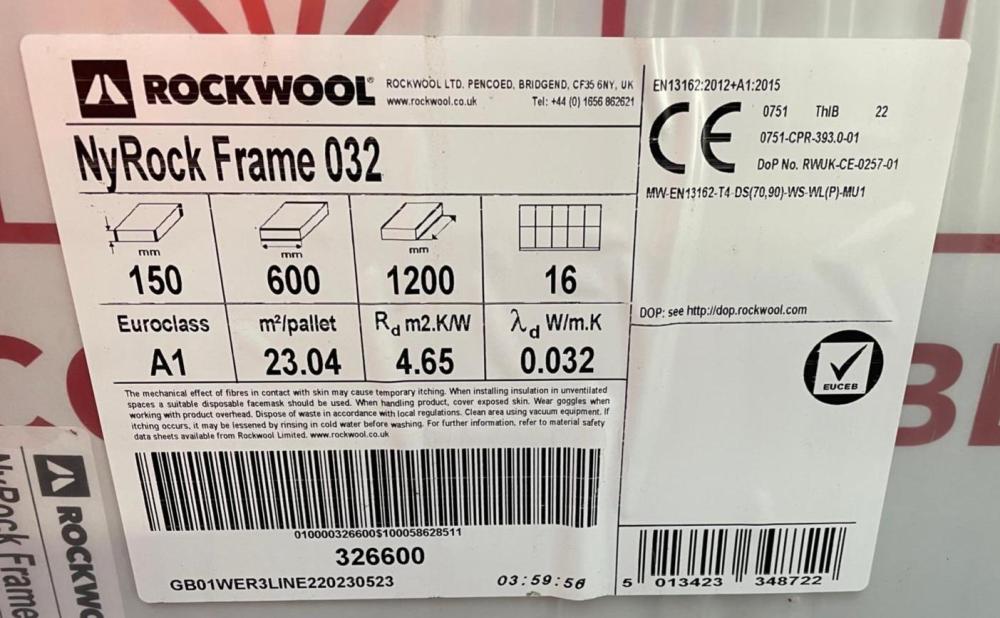


.png.7f14d96bfe0e149686d840235101f1fc.png)




